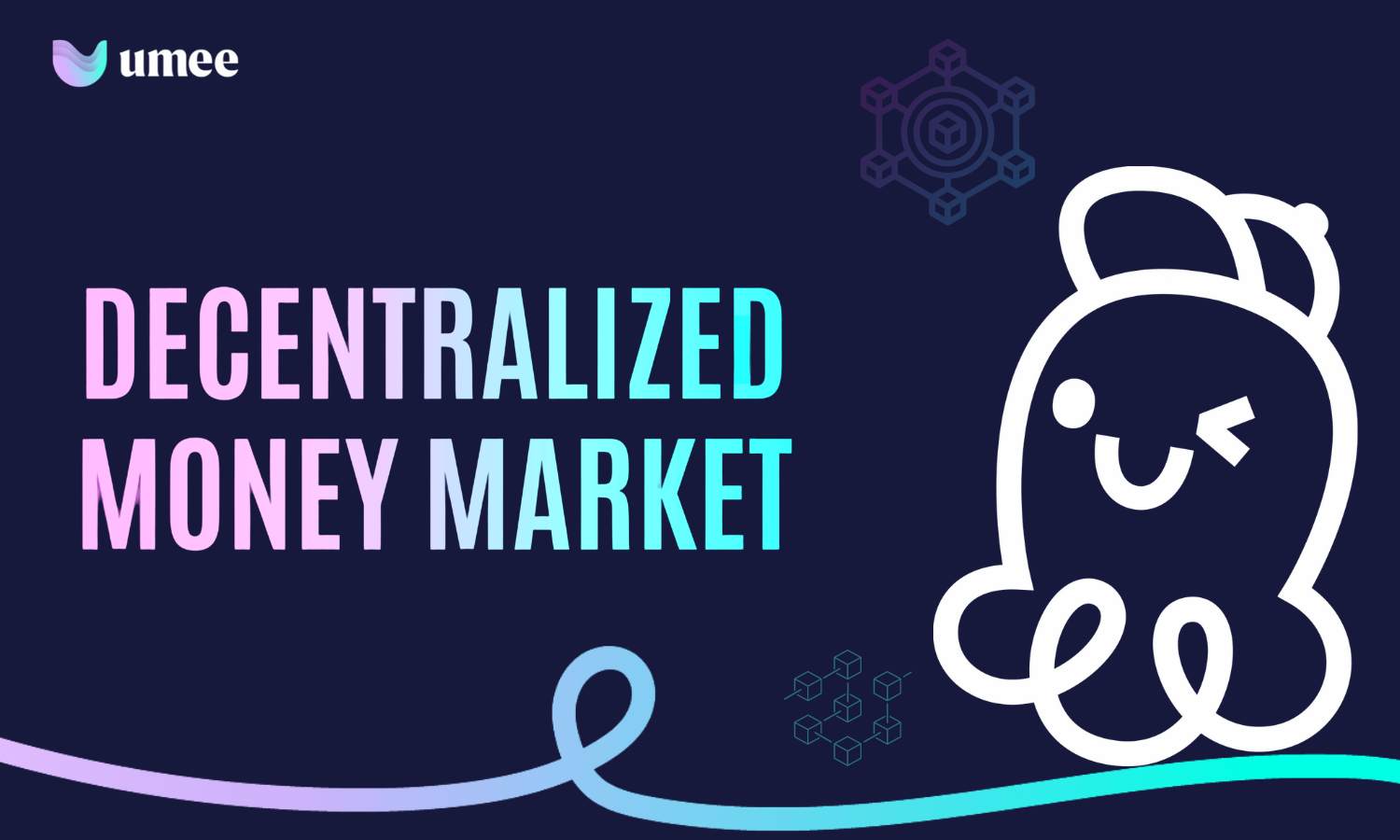What is a Decentralized Money Market?

What is a Money Market?
Over the years money markets have changed, but their main purpose and fundamental designs have mostly remained the same. Borrowers use money markets to take out a short-term loan, while at the same time putting up another currency (e.g. Euros) or an asset (e.g. real estate) as collateral. This collateral is required to help ensure the borrower’s debts are repaid in full; if the borrower fails to pay back their debts the collateral is sold to make the lender whole. Otherwise, the collateral is returned when the borrower pays off the loan plus interest.
In exchange for the ability to borrow working capital from lenders, borrowers are required to pay a fee, usually in the form of an annual interest rate which generates yield for lenders and incentivizes deposits. This interest rate is typically a function of supply and demand to ensure that sufficient liquidity is available for both borrowers and lenders. A high supply and low demand of an asset lead to lower interest rates, while a low supply and high demand lead to higher interest rates. Various money markets compete based on the interest rates they offer and other parameters such as how much collateral is required for loans. The unfortunate truth with centralized money markets is that interest rates are mostly fixed and do not change much throughout a year.
What Are Decentralized Money Markets?
While traditional money markets have been a net positive for the global economy over the centuries by enabling businesses to expand and allowing citizens to grow their savings, the money markets of today are typically operated by centralized institutions, which means a significant amount of power and influence over user funds is granted to a single entity. This design increases costs for lenders and borrowers and requires an excessive amount of trust in a single party.
In response to these limitations, developers are now utilizing blockchain-based smart contracts to create decentralized money markets. Instead of being controlled by a centralized institution, decentralized money markets are operated through on-chain programmatic code that is upgraded and managed by a global community of stakeholders in order to decentralize control and reduce points of failure.
Non-custodial
Decentralized money markets operate in a non-custodial manner where users don’t need to trust a centralized institution to make wise decisions. Instead of a centralized institution deciding how funds are used, decentralized money markets like Umee follow the predefined logic of on-chain smart contracts, granting a large degree of assurance that funds cannot be improperly used and ensuring that users keep full control over when and how they can withdraw.
Rates Based on Actual Supply & Demand
By eliminating the middleman, decentralized money markets typically allow lenders to earn greater lending interest and borrowers to access more favorable borrowing rates when compared to traditional banks. Decentralized money markets usually have floating rates based on supply and demand.
As the utilization rate (percentage of pool that has been borrowed) of an asset increases above a predetermined threshold, borrow rates increase to incentivize borrowers to make payments on their loans. At the same time, lending rates increase to encourage more users to deposit to the pool. Similarly, as the utilization rate of an asset decreases below a certain threshold, borrow rates decrease to encourage more borrowing activity. As a result, lending rates also decrease since the asset is in low demand. These functions help provide lenders and borrowers with more reasonable rates while ensuring that there is always ample liquidity available for all market participants.
Permissionless
Through the use of smart contracts, on-chain money markets can operate in an inherently permissionless manner where users do not need to ask permission from a central gatekeeper. This enables anyone with access to the internet to lend and/or borrow working capital with minimal friction. This censorship resistance creates a wider market of users, including the underbanked, generating more economic activity and higher yields as a result.
Fully Collateralized
Unlike the traditional financial system which commonly operates in an undercollateralized and fractional reserve manner where users can borrow more funds than they deposit as collateral, decentralized money markets operate in an overcollateralized manner. By depositing more collateral than what is being borrowed, borrowers who cannot pay back their debts have their collateral liquidated, limiting risks of insolvency and providing a high degree of security for lenders.
As the adoption of crypto accelerates, the demand for users and institutions to borrow against crypto-assets will increase significantly. Decentralized money markets can serve as the linchpin for the transformation of global finance as traditional debt markets are fundamentally reborn in web3.
Open Composability
Smart contract-powered financial applications like decentralized money markets have a unique advantage in that deposited funds can be tokenized. These tokenized deposits become interest-bearing representations of the underlying assets and can be used within other applications within the decentralized finance ecosystem.
With these advantages in combination, decentralized money markets have become one of the most widely used applications in the DeFi economy, alongside decentralized exchanges and stablecoins.
Conclusion
Decentralized money markets provide the DeFi ecosystem with a crucial building block on which advanced financial products can be built. While lending and borrowing are helpful, it becomes even more powerful when combined with other DeFi “money legos” to create a sum greater than its parts. As these money markets expand, they will grow in liquidity and provide more utility and opportunity for more users. Still, they are at the forefront of innovation in DeFi as yields in the real-world economy become increasingly unpredictable. The future for decentralized money markets is brighter than ever.
Take the Quiz
Badges serve as proof a user has completed the corresponding Umeeversity Quiz. Badge owners should not expect to receive any UMEE tokens or additional rewards.
